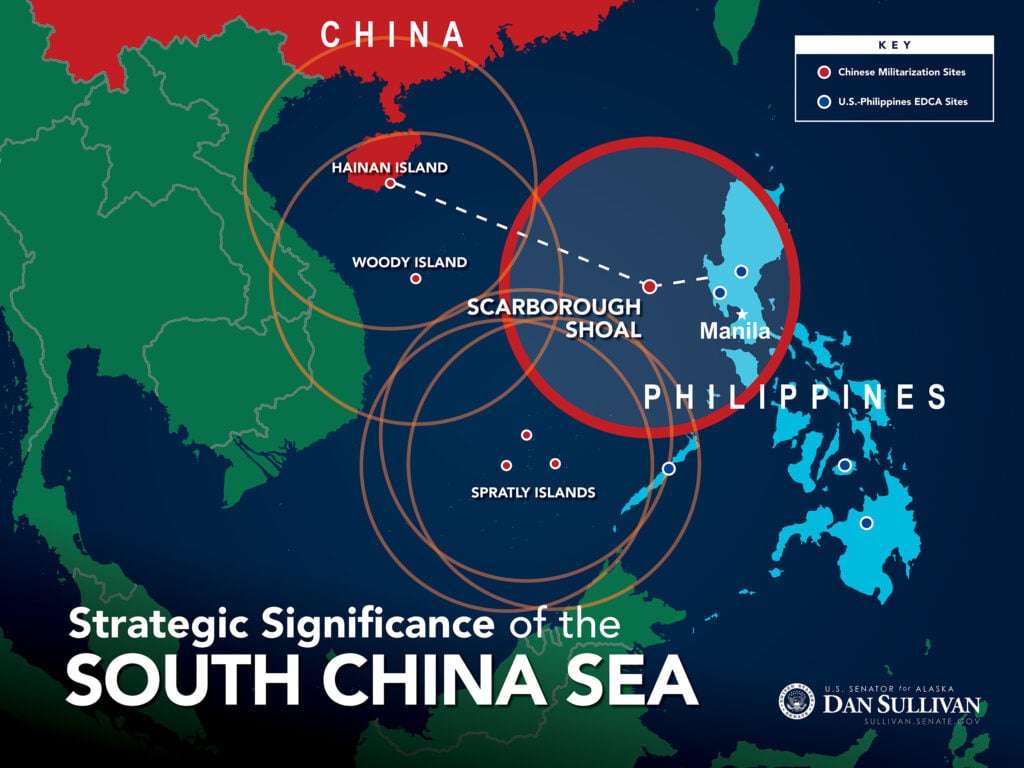
WASHINGTON: Across the Pacific, “the US Army, in essence, is engaging in war by other means” — even as it launches a historic and expensive build-up of new weapons for a literal war, says Army Secretary Ryan McCarthy.
The service is sticking with all 31 of its priority programs in the 2021 budget plan due out next month, McCarthy told reporters Friday after a speech on Pacific strategy at the Brookings Institution. (More on his wide-ranging thoughts below).
The service is emerging from the wreckage of two decades of cancelled modernization programs. But even its own generals wonder publicly how the Army’s going to pay for all 31 if this time they actually succeed.
“It’ll be a good problem to have,” McCarthy said. It’s also solvable.
“If they’re successful in prototyping, that presents a good dilemma: Now you’ve got to a buy a lot of them,” he said. “Then comes the hard prioritization where Mike Murray” – the four-star chief of Army Futures Command – “and Bruce Jette” – the civilian Army Acquisition Executive – “come in and they talk to us and they say, ‘we’ve got to go big on this one, we’ve got to slow this.’”
Prioritizing some programs over others isn’t the only tool the Army can use: It can also prioritize some units over others, based on what role they play in war plans and what kind of adversaries they’ll face. While McCarthy didn’t give a specific example, one can imagine, for example, that a Multi-Domain Task Force slated to fight Russia on the plains of Eastern Europe would need a lot more armored vehicles, and a lot fewer long-range anti-ship missiles, than one headed for the First Island Chain off the coast of China.
“Does every unit in the Army get every piece of equipment or do you make it specific by division and what mission set they have to perform?” McCarthy mused when I raised the issue after a Future Vertical Lift flight demonstration in Texas Wednesday. “Those are choices, to your point, that will be made in the ’23, ’24, ’25 time frame.”
“We don’t have to make those calls now,” he emphasized. “A lot of it will be [determined by] how we perform the next 18 months. But harder choices are in front of us.”
McCarthy reemphasized this point at Brookings when he spoke on Friday. “You’re not going to see that [dilemma] in ’21,” he told reporters. “Really it’s ’23-’24 when these LRIP [Low Rate Initial Production] tranches are coming through the system.”
Infinite Games In The Pacific
Weapons programs are driven by hard numbers: schedule deadlines, budget figures, requirements for range, speed, and firepower. But the proper use of weapons to wage or deter a conflict is much harder to quantify. The Army has struggled with those intangibles for generations, since “body counts” utterly failed to capture the complexity of the war in Vietnam.
“The military has had a boxer’s mentality,” McCarthy argued at Brookings. “Go in…deliver a devastating punch in the first round —fast, lethal, and gone.”
That fast-in, fast-out approach might win a conventional war. It’s proven inadequate to both the insurgencies of the last two decades – where stunningly swift victories against the Taliban and Saddam Hussein governments utterly failed to translate to long-term peace and stability with the Afghan and Iraqi peoples – and to long-term strategic competition with major powers – where the US has not stopped Russia from seizing Crimea or China turning Pacific reefs into fortified artificial islands.
When it comes to deterring China and influencing neutrals in the Pacific, “we are playing — as Simon Sinek would argue — an infinite game,” McCarthy said. “To engage with a finite mindset would have the Army measuring the wrong metrics.”
It’s worth unpacking these terms, which Sinek, author of Infinite Game, admits borrowing from philosopher James Carse. Most things we think of as “games” – football, baseball, chess, even the infamously subtle and ancient Chinese game of go – are finite: At some point, somebody will win and somebody will lose (or both sides tie), and the game ends. Carse and Sinek argue, however, that long-term competitions between individuals, businesses, or even nation-states are “infinite games,” capable of going on forever, with no clear winner or loser. In infinite games, they say, success means you get to stay in the game. In other words, in a finite game, you play to win; in an infinite game, you play to keep playing.
You need to know which kind of game you’re playing. Sinek himself explained the US defeat in Vietnam in these terms. The Americans thought they were playing a finite game, one where they could expend a limited amount of money, time, and lives, defeat the Communists and go home. The North Vietnamese were playing an infinite game, for the survival and expansion of their regime, and they were willing to spend money, time and lives indefinitely to keep playing, because they saw the alternative as not defeat but extinction.
How does this analysis apply to the US today? Before his ouster, Defense Secretary Jim Mattis promulgated a National Defense Strategy that explicitly recognized that the Defense Department couldn’t just prepare for war – the “conflict space” – but must also reassure allies, sway neutrals, and deter adversaries continually in peacetime – the “competition space,” where maneuver is as much a matter of disinformation, diplomacy, and proxy war as military movements.

Graphic courtesy Sen. Dan Sullivan
Now, this framework still has its flaws. Russia, China, Iran, and North Korea don’t see the clear division between peace/competition and war/conflict that US law and policy do. For them lethal force is always an option, even in “peacetime,” as with Putin’s assassination of defectors and Soleimani’s arming of anti-US guerrillas in Iran.
Nevertheless, it’s an intellectual breakthrough for the Pentagon to realize it actually has to engage in perpetual competition. Even the long-term framework of the “Cold War,” as its name implies, assumed that someday the Soviet Union would collapse, we would win, and the game would end.
So when McCarthy argued Friday for the Army’s relevance in the Pacific, while he mentioned combat capabilities like anti-ship missiles, he spent much more time on the intangibles of long-term presence. When the Army freed up $32 billion in its 2020-2024 budget for its top priorities, he said, much of it went to weapons programs, but “hundreds of millions” went to expand training and exercises with allies, with a goal of much longer-term deployments.
“We must be engaged in constant competition, versus an episodic engagement strategy,” he said. “It’ll be the Army on the ground, partnered with militaries, influencing the people and serving as the ultimate deterrent, [that] will enable military strength to overcome economic strangleholds” – China is notorious for using economic leverage to bring countries into line politically and militarily – “and offer an alternative to the adversary’s narrative.”
“It’s to partner from 500 feet under the water or 30,000 feet in the air,” McCarthy said, to laughter at the Army’s traditional rivals. “People don’t live on water, in air, or in space,” he went on, echoing a theme from the Army first began emphasizing back in 2013 with the short-lived “strategic landpower” concept. “Long before conditions escalate to war, there will be a battle of ideas, this is warfare by the other means, when decisions will occur the heart of the people…. The Army is in the people business.”
This all interesting, responded Brookings interlocutor Michael O’Hanlon, but it doesn’t sound very military – more like something the Peace Corps might do.
The Army’s still the Army, McCarthy replied. “I was at a dignified transfer at three o’clock in the morning on Tuesday,” he said, when the remains of a soldier slain in the infinite game came home to Dover Air Force base. “We are not the Peace Corps.”
Head start: Early ’25 may be first flight for Black Hawk with T901 engine
Sikorsky is using remaining FARA dollars to test out the new T901 engine in anticipation of integrating it on a UH-60 M Black Hawk later this year.


























